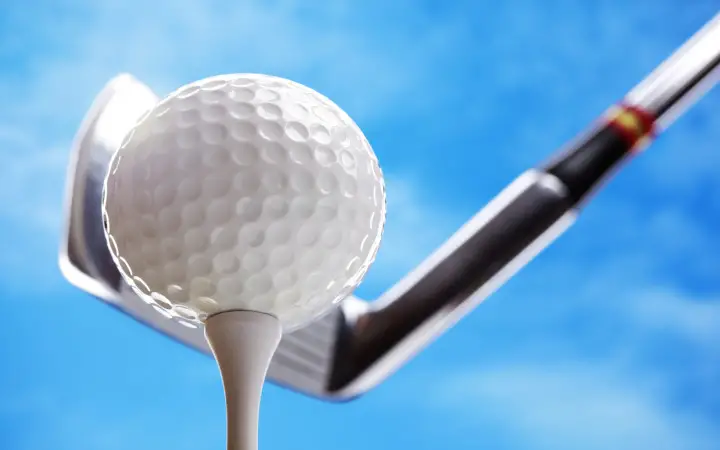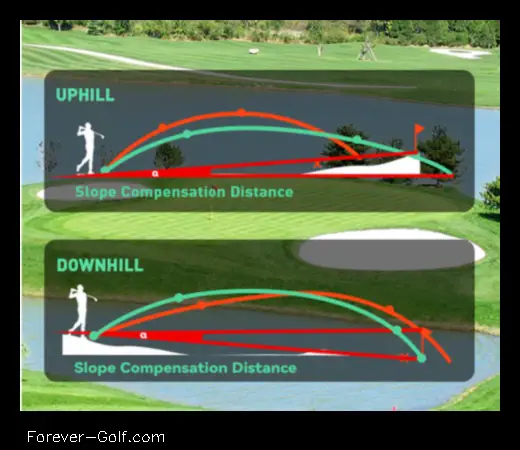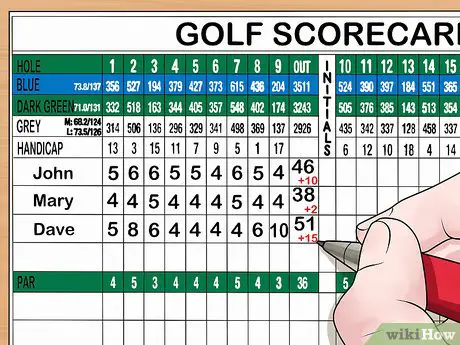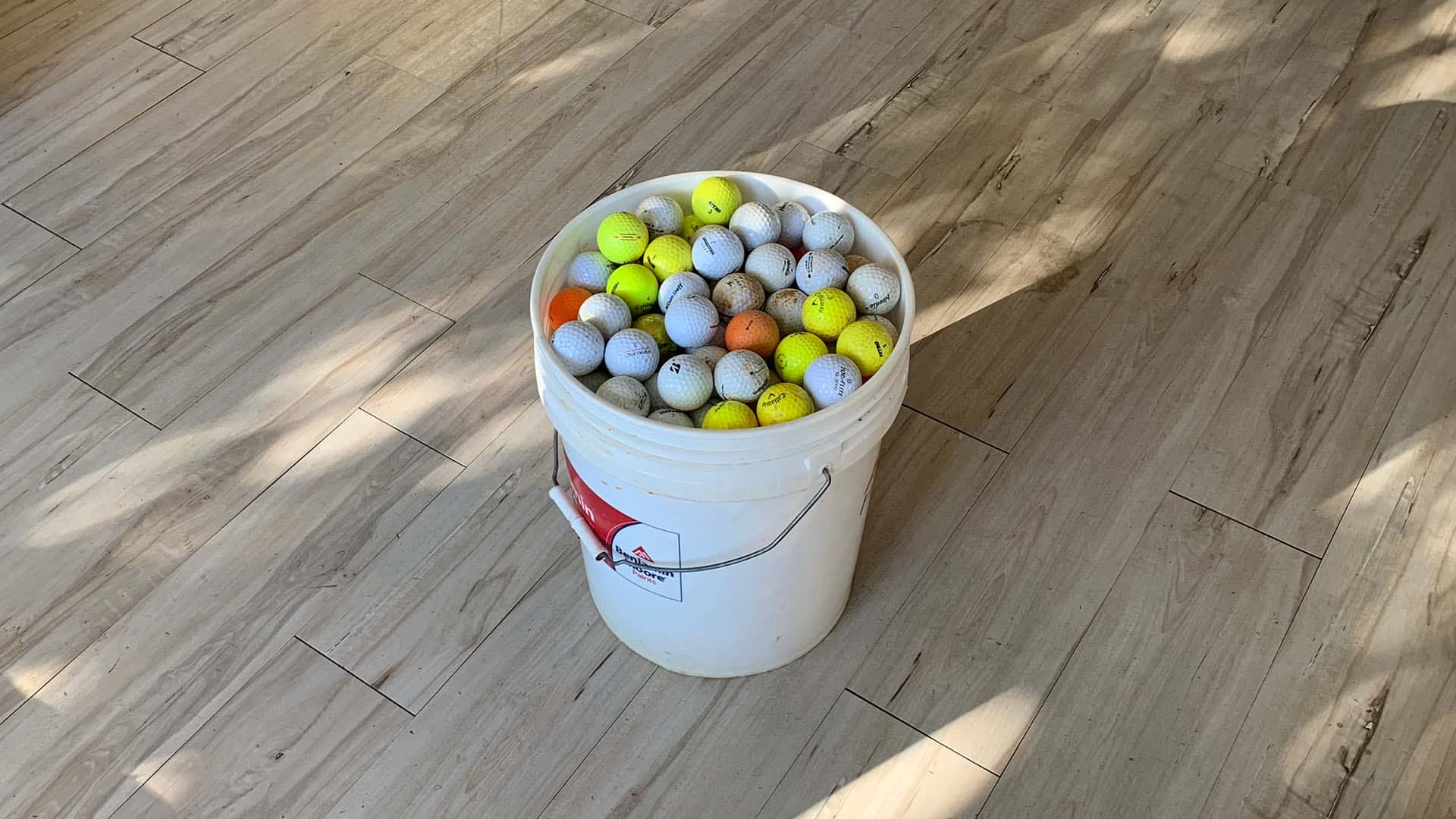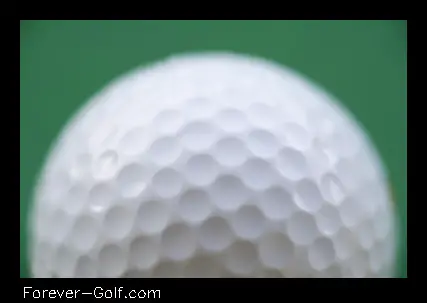
How Many Dimples Are on a Golf Ball?
Golf balls have between 300 and 500 dimples. The exact number of dimples varies depending on the brand and model of the golf ball.
Dimples are designed to improve the aerodynamics of a golf ball. They help to reduce drag and keep the ball in the air longer.
The ideal number of dimples on a golf ball depends on a number of factors, including the ball’s speed and spin rate.
Golf balls with more dimples are more aerodynamic at slower speeds, while golf balls with fewer dimples are more aerodynamic at faster speeds.
The shape and size of the dimples also affect the aerodynamics of a golf ball. Dimples that are shallow and widely spaced are more aerodynamic at slower speeds, while dimples that are deep and closely spaced are more aerodynamic at faster speeds.
Dimples on a golf ball also help to create spin. The dimples cause the air to flow faster over the top of the ball and slower over the bottom of the ball. This creates a difference in pressure that causes the ball to spin.
The amount of spin that a golf ball creates depends on the number, shape, and size of the dimples.
Dimples on a golf ball can also affect the distance that the ball travels. Golf balls with more dimples tend to travel farther than golf balls with fewer dimples.
The reason for this is that dimples help to reduce drag and keep the ball in the air longer.
Dimples on a golf ball can also affect the performance of the ball. Golf balls with more dimples tend to be more forgiving than golf balls with fewer dimples.
This is because the dimples help to keep the ball in the air longer, even if it is hit off-center.
The ideal number of dimples, shape, and size for a golf ball will vary depending on the individual player’s swing speed and style.
If you are looking for a golf ball that will perform well for you, it is important to experiment with different types of golf balls until you find one that you are comfortable with.
| Feature | Explanation |
|---|---|
| Number of dimples on a golf ball | The ideal number of dimples on a golf ball is between 300 and 500. |
| Dimple design on golf balls | The dimples on a golf ball are designed to create a turbulent airflow behind the ball, which helps to reduce drag and increase lift. |
| Dimple function on golf balls | The dimples on a golf ball help to improve the ball’s performance by:
|
| Dimples on a golf ball history | The first golf balls were made of solid rubber and did not have any dimples. In the early 1900s, golf balls began to be made with dimples, and it was quickly discovered that dimpled golf balls performed better than solid golf balls. |
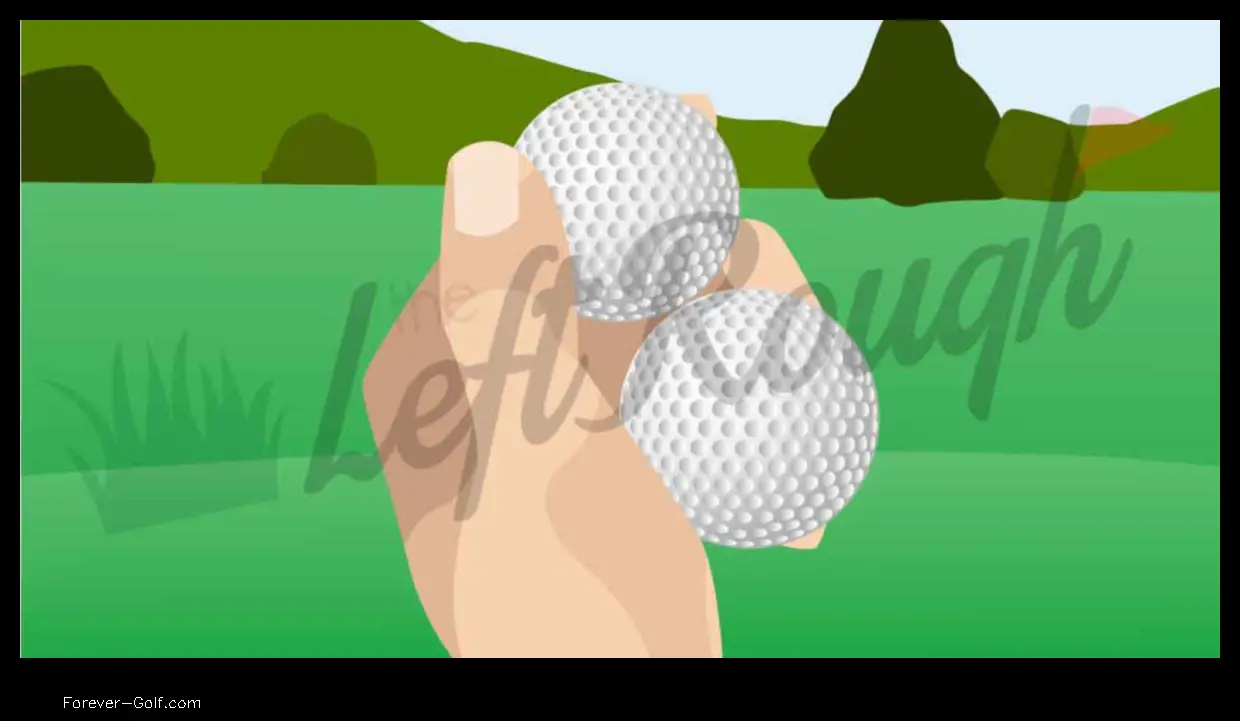
II. History of dimples on golf balls
Golf balls have been dimpled since the early 1900s. The first dimpled golf ball was patented by Scotsman Robert Paterson in 1905.
Prior to the invention of dimpled golf balls, golf balls were smooth. However, it was soon discovered that dimpled golf balls flew farther and straighter than smooth golf balls.
The reason for this is that the dimples on a golf ball create a turbulent boundary layer around the ball. This turbulent boundary layer helps to reduce drag and keep the ball in the air longer.
The ideal number of dimples on a golf ball is between 300 and 500. The shape and size of the dimples also play a role in how the ball flies.
Today, all golf balls are dimpled. The number, shape, and size of the dimples are determined by the manufacturer.
III. Why do golf balls have dimples?
Golf balls have dimples to reduce drag and improve lift. The dimples create a turbulent boundary layer around the ball, which reduces the pressure on the back of the ball and allows it to travel farther. The ideal number of dimples on a golf ball is between 300 and 500, and the dimples should be arranged in a symmetrical pattern.

IV. The ideal number of dimples on a golf ball
The ideal number of dimples on a golf ball is between 300 and 500. The exact number of dimples depends on the size, shape, and material of the golf ball.
Dimples help to reduce drag and improve the aerodynamic performance of a golf ball. They also help to create a more consistent flight path and increase distance.
Golf balls with more dimples tend to be more aerodynamically efficient, but they also tend to be less durable. Golf balls with fewer dimples tend to be more durable, but they are not as aerodynamically efficient.
The optimal number of dimples for a particular golf ball will depend on the golfer’s swing speed and the conditions of the course.
Generally speaking, golfers with a slower swing speed will benefit from a golf ball with more dimples, while golfers with a faster swing speed will benefit from a golf ball with fewer dimples.
Golfers who play in windy conditions will also benefit from a golf ball with more dimples, as the dimples will help to keep the ball in the air longer.
Ultimately, the best way to determine the ideal number of dimples for a particular golfer is to experiment with different golf balls and see what works best.
V. Dimple shape and size
The shape and size of the dimples on a golf ball are important factors in determining the ball’s performance.
Dimples are typically circular, but they can also be oval or teardrop-shaped. The size of the dimples is typically measured in millimeters.
The shape and size of the dimples affect the way the ball travels through the air. Dimples create a turbulent airflow behind the ball, which helps to reduce drag and keep the ball in the air longer.
The ideal shape and size of the dimples for a particular golf ball will vary depending on the ball’s intended use. For example, a ball designed for long drives will have larger, shallower dimples than a ball designed for accuracy.
The dimples on a golf ball are an important part of the ball’s design, and they play a significant role in determining the ball’s performance.
VI. Dimples and aerodynamics
Golf ball dimples play an important role in aerodynamics. They help to reduce drag and keep the ball in the air longer. The shape and size of the dimples affect the way the ball flies, and the ideal number of dimples varies depending on the type of ball and the conditions.
Dimples create a turbulent boundary layer around the ball, which reduces the drag. This is because the turbulent air flow creates a wake behind the ball that helps to keep it in the air. The dimples also help to keep the ball from tumbling end over end, which would also increase drag.
The ideal number of dimples for a golf ball depends on a number of factors, including the ball’s speed, the air density, and the humidity. In general, faster balls require more dimples, and balls that are played in humid conditions require fewer dimples.
The most common number of dimples on a golf ball is 336, but some balls have as few as 300 or as many as 500. The shape of the dimples also varies, with some balls having round dimples and others having oval or teardrop-shaped dimples.
Dimples are an essential part of a golf ball, and they play a critical role in the ball’s performance. By understanding how dimples work, golfers can make informed decisions about the type of ball they use and how they play it.
VII. Dimples and spin
Dimples on a golf ball help to create lift, which is a force that pushes the ball upwards. This is because the dimples create a turbulent airflow around the ball, which causes the ball to rise. The more dimples on a ball, the more lift it will create. This is why golf balls with a higher number of dimples tend to fly further than those with fewer dimples.
The shape and size of the dimples also affect the amount of lift that is created. Dimples that are more rounded create more lift than dimples that are more square. Dimples that are smaller also create more lift than dimples that are larger.
The ideal number of dimples on a golf ball depends on the ball’s intended use. For example, a ball that is designed for long distance will typically have more dimples than a ball that is designed for accuracy.
Dimples are an essential part of a golf ball, and they play a key role in determining how the ball flies. By understanding how dimples work, you can choose the right golf ball for your needs and improve your game.
Dimples and distance
Dimples and distance
Dimples on a golf ball help to reduce drag and increase lift, which can lead to longer distances. The dimples create a turbulent boundary layer around the ball, which reduces the amount of air that sticks to the ball and slows it down. The dimples also create a lift force that helps to keep the ball in the air longer.
The ideal number of dimples on a golf ball depends on the ball’s speed and spin. For slower-moving balls, more dimples are needed to create enough lift. For faster-moving balls, fewer dimples are needed to reduce drag.
The shape and size of the dimples also affect the ball’s distance. Dimples that are shallower and wider create more lift, while dimples that are deeper and narrower create more drag.
The number, shape, and size of the dimples on a golf ball are all carefully designed to optimize the ball’s performance. By understanding how dimples affect distance, golfers can choose the right ball for their game and hit the ball longer.
IX. Dimples and performance
Dimples on a golf ball improve its performance in several ways.
- Dimples reduce drag, which allows the ball to travel farther.
- Dimples create a more aerodynamic shape, which helps the ball to fly straighter.
- Dimples help the ball to spin, which gives it more control.
The ideal number of dimples on a golf ball depends on the ball’s size and the type of golf course it will be used on.
For example, a ball with fewer dimples will travel farther on a windy day, while a ball with more dimples will be more accurate on a course with tight fairways.
Dimples are an essential part of a golf ball, and they play a major role in the ball’s performance.
Golf Ball Dimples
FAQ
Q: How many dimples are on a golf ball?
A: The standard number of dimples on a golf ball is 336.
Q: What is the purpose of dimples on a golf ball?
A: Dimples help to reduce drag and improve the ball’s flight.
Q: What is the ideal shape and size for dimples on a golf ball?
A: The ideal dimple shape is a shallow, round dimple. The ideal dimple size is about 0.02 inches in diameter.
- Where Was the First Topgolf in the English Language - April 5, 2024
- Topgolf Back Net Distance How Far Is It - April 5, 2024
- Top Golf Where to Find the Best Golf Experiences Outside of the U.S. - April 5, 2024
